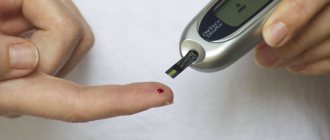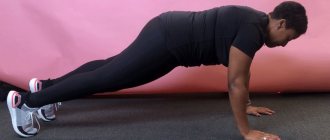Skin when the body begins to lose weight
With rapid weight loss, almost every woman's skin sags, becomes flabby, and does not have time to adapt to body changes. Most often, this situation arises when the patient wants to lose 20-30 kg in a week or month, which creates the need for surgery.
When the rate of weight loss is relatively slower, stretch marks (stretch marks) appear on the skin. To destroy them, you need to take care of the proper diet and hydration of the damaged areas. In some cases, the skin may sag due to lack of water in the body.
How to avoid sagging skin while losing weight
The outer shell of a person can suffer due to insufficient synthesis of vitamin D and trace elements such as magnesium and selenium. Their deficiency occurs when losing excess fat without appropriate dietary nutrition. In this case, the patient’s skin wrinkles, and he himself becomes depressed.
When losing weight in 7-10 days, the muscle mass begins to melt in most recipients, and the covering covering it may change color and become flabby.
Note. Rapid weight loss can lead to a sharp drop in immunity due to the skin losing its protective functions.
Cut seven times: how torsoplasty is performed - circular body correction
Bodylifting has two “packages” of options – standard and extended. Plastic surgery to remove sagging skin in the abdomen, thighs and buttocks is a standard body lift, which is also called torsoplasty or circumferential correction.
An expanded “package” of aesthetic restoration may include lifting the breasts, arms and décolleté, modeling the buttocks with implants, liposuction, and suturing the muscles of the anterior abdominal wall. For your money - if not everything, then a lot.
When discussing the range of necessary manipulations with your doctor, respect the specialist’s opinion. Everything that can be cut off within the limits of your health, wallet and the capabilities of modern anesthesiology will be done in one go. But if a turnkey restoration is required, the plastic history is usually divided into chapters.
Cut by cut
Before surgery, the surgeon will draw a “map” on the body. After putting the patient under anesthesia, he will excise excess skin, tighten and layer-by-layer stitching of tissue. In torsoplasty, horizontal encircling incisions begin above the pubis and connect at the lumbosacral spine.
To model the inner surface of the thighs, the incisions are localized in the inguinal folds; in case of pronounced excess skin, the incisions are extended from the groin to the knee.
How to prevent sagging skin
Is it possible to eat cheese while losing weight?
To ensure that unpleasant effects do not interfere with your planned weight loss, you need to observe certain conditions and strictly follow them:
- gradual fat loss;
- adhering to a strict diet;
- physical activity throughout the entire period of weight loss;
- constant monitoring of performed actions by entries in a special diary.
Learn how to prevent sagging skin while losing weight in a nutritionist's office.
Physical activity is required
The doctor examines the patient who wants to get rid of extra pounds and gives appropriate recommendations, for example:
- Constant skin care is necessary when losing weight, which is carried out using various cosmetics;
- It is advisable to undergo courses of mesotherapy, peeling or body wraps with aromatic oils.
Note : To avoid the appearance of stretch marks and wrinkling of the skin, a complex of vitamin and mineral supplements is introduced into the diet.
How to lose weight so that the skin does not sag or lose its natural elasticity, you can ask at a cosmetology salon. In such institutions there are special methods that allow you to quickly eliminate unwanted mass.
Cosmetologists can advise on how to lose weight without sagging skin on your leg or arm using the following methods:
- acupuncture (it can not only tidy up the skin, but also heal the entire body);
- ozone therapy;
- cryotherapy (fat burning with cold);
- peeling.
The salon can offer mud wraps and other procedures that help protect the skin from stretch marks and sagging. If there is a financial opportunity, then they use methods of rapid weight loss such as liposuction or pressing. In the first case, the fat is removed by suction, and the excess skin is cut off. With another method, the patient undergoes up to 14 therapy sessions, while the outer shell shrinks to the desired size on its own, so there is no danger of folds or stretch marks developing.
Peeling will improve skin regeneration and tighten it
The gym is a quick way to tighten muscles
Dumbbells, barbells and exercise machines are not only suitable for turning into a pumped-up bodybuilder. Working out in the gym will help you simply tighten and strengthen your muscles. It is best to start working out with a personal trainer - he will select the optimal load, volume of training and training program depending on the desired results. In order to remove sagging muscles, it is enough to go to the gym 2-3 times a week and exercise with light weights. A good result is obtained by performing basic strength exercises - squats with a barbell, deadlifts, bench press, pull-ups, lunges with dumbbells. These exercises work multiple muscle groups and produce quick results that are visible within a couple of months. By exercising regularly, you will build up a little and gain a beautiful, toned body.
Drink more water during exercise. This will help maintain your metabolism at the proper level.
How to maintain elasticity
Most people don’t know what to do to prevent their skin from sagging when losing weight and losing its protective properties. Therefore, many who want to quickly lose weight instead of losing weight get a whole range of endocrine diseases.
Why weight stays the same when losing weight: what to do
This may occur due to the loss of elasticity of the epidermis.
To save it, it is recommended:
- Reduce body weight by no more than 0.5-1 kg per week. This will prevent rapid fat burning and allow the shell to adapt to new conditions.
- To prevent the elasticity of the skin from disappearing, ensure that the body receives at least 2 liters of water per day. Replenishing moisture reserves allows you to stabilize metabolic processes.
- It is necessary to take care of your skin every day. To do this, purchase a special cream for pregnant women, which prevents stretch marks from appearing on the stomach or other parts of the body.
- In order not to be tormented by the question of what to do to prevent sagging skin when losing weight, pay attention to the daily menu, which should contain more fruits and vegetables. Vitamin complexes are taken along with them. This allows you to tighten the skin, since the food balances all the substances necessary for the development of the epidermis.
Important ! It is prohibited to use fried, salted, canned and pickled foods. Consumption of tea, coffee, chocolate and sugar is limited.
You should not drink carbonated drinks and alcohol, otherwise stretch marks may appear on your face when losing weight. Food should be steamed and taken in small pieces 5-6 times a day.
Taking care of the body while losing weight implies the psychological stability of the recipient. Some people, having quickly lost half their weight, become surgical patients, because due to the high rate of fat burning, their skin elasticity sharply decreases. This leads to the development of symptoms of various diseases due to a sharp decrease in immunity.
Therefore, such patients require psychological support. Nervous stress should not be allowed due to the risk of developing a depressive state, which is quite difficult to treat.
To maintain skin elasticity, you should avoid sudden weight loss.
Is it possible to build muscle and lose fat at the same time?
Well, I have news: good and bad.
- The good news: Yes, it is possible to lose fat and gain muscle at the same time.
- The bad: this is only possible under certain conditions.
- Very bad: most of the advice on how to lose weight so that you lose fat and not muscle is no good.
Yes, those “gurus” who swear they know the secret to gaining muscle mass are almost always talking nonsense. And I can prove it.
In this article, we'll talk about how the body actually builds muscle and loses fat, and then we'll look at what you need to do to do it.
Let's start with gaining muscle mass.
Is it possible to gain muscle mass and burn fat at the same time!?
Two vital processes take place in your muscles every day - protein synthesis and protein breakdown.
- The destruction of proteins means their breakdown into smaller components: peptides and amino acids.
- Protein synthesis means creating new proteins, as well as their smaller components.
When you are healthy and your diet is in order, muscle tissue remains in a fairly stable state. That is, the rate of synthesis and breakdown is more or less balanced, and you do not lose or gain significant amounts of muscle in your daily life. (Strictly speaking, you lose muscle mass as you age, but you get the idea.)
This means that the body must produce more protein than it loses, and then muscle growth increases slightly.
Then what should be done to ensure that the rate of protein synthesis exceeds the rate of breakdown?
You must take certain actions in order to start and maintain this process. Muscles undergo a fairly active metabolism (metabolism), which requires quite a lot of energy to maintain it. Without this, muscles will not grow.
And the main thing you should do here is, of course, train your muscles. Strength training damages muscle cells, which signals the body to increase protein synthesis to repair muscle tissue.
Although this does not mean that by restoring muscles, the body returns them to their previous state. It strives to adapt to new stimuli—training—and produces new muscle cells, increasing muscle size and strength.
“What is “progressive overload”?” you ask? This is a gradual increase in the level of tension in muscle fibers. When you systematically give your muscles more and more load, they constantly adapt to it, becoming bigger and stronger.
Of course, muscles can become stronger without increasing in size (due to increased neuromuscular activity), but there will come a point when more muscle fibers are required to achieve your training goals.
Pumping is great and can be included in a training program, but high rep ranges and exhausting sets should never be the focus. This training significantly increases metabolic stress, which promotes muscle growth, but not as much as progressive overload does.
This is why the biggest athletes in the gym are usually also the strongest, and why those who are chasing pumps by doing supersets, drop sets, giant sets, etc., do not have the same physical capabilities.
If you don't do this, you won't get the benefits of progressive overload and will gain little muscle mass no matter what else you do (unless you use chemicals, of course).
Heavy training and progressive overload do not guarantee muscle growth because you also need to eat right.
You've probably heard that you need to eat a lot to get bigger, and there's some truth to that.
You must consume enough protein, which provides the basis for muscle growth, and also consume enough calories, which ensures that protein synthesis is as efficient as possible.
However, before we talk about diet, let's look at the other side of body recomposition, namely fat burning.
How to force the body to burn fat? Losing fat is easier than you thought.
- Don't get hung up on diet.
- There is no need to avoid carbohydrates, or indeed any other food.
- You should not eat a strictly defined number of meals per day on a schedule.
- Don't try to manipulate hormones.
In order to avoid mistakes when losing weight, you need to properly understand the mechanics of this process - how to burn fat correctly.
This means the relationship between the energy you provide to the body through food and the energy that is expended in cellular and physical activity. This ratio is often measured in kilocalories.
You've probably heard it all before, and if you're disappointed, let me explain how to properly burn fat, not muscle.
When you eat food, you provide your body with a relatively large amount of energy in a short period of time. It burns some of this energy and stores some as fat for later use.
Scientifically, this process of nutrient absorption is called “postprandial”. "Fasting" means "after" and "prandial" means "having to do with food." In this postprandial state, fat burning does not occur because the body is in fat storage mode.
The reason for this is simple: why does the body burn fat to produce energy if you provide it with the required amount and even more?
Eventually, the body completes digestion and absorption of food, which takes several hours, and then enters a state that scientists call “post-absorptive.”
The energy obtained from food has ended, but the functioning of the body must continue. What can the body do to meet its energy needs?
That's right - it can burn fat. The body must now go into “fat burning mode” to work while it waits for the next meal.
The light parts of the graph show what happens when you eat food: insulin levels rise to help absorb nutrients, and fat burning stops.
The dark areas show what happens when the energy from food runs out: insulin levels drop, signaling the body to start burning fat.
What happens if these two parts of the graph are more or less balanced? That's right - the fat level will remain the same. The body will burn approximately the same amount of fat as it stores.
What happens if the light parts exceed the dark parts? Then fat reserves will exceed the amount of fat burned, and fat deposits will increase.
What happens if the dark parts collectively exceed the light parts? You burn more fat than you store, which means your overall fat mass decreases.
This is why losing significant amounts of fat requires expending more energy than you take in.
It doesn't matter how many "unclean" foods you eat or when you eat them. Your metabolism operates according to the first law of thermodynamics, which means that fat stores (energy) cannot be increased without providing excess energy and cannot be decreased without limiting energy intake, thereby creating an energy deficit.
- That's why research shows that low-calorie diets result in clinically significant weight loss, regardless of the macronutrients they rely on
- That's why Professor Mark Haub was able to lose 12 kg while on a diet of protein shakes, cakes, cookies, chips and pastries.
When it comes to simply shedding extra pounds, calories are still calories. The body uses a certain amount of energy, and if you give it less than it needs, then it has no choice but to continue burning fat to maintain life.
What if your goal is more than just losing weight? What if you want to lose fat but not muscle? In this case, calories are no longer just calories. Some types of calories become more important than others here.
I have already written about this in detail in my books and articles, so I will briefly outline the essence.
Research shows that when calories are reduced, high protein diets are more effective in reducing body fat, and these diets also help preserve muscle and increase feelings of fullness.
Special government agencies recommend 0.8 g. per kilogram of body weight, but research shows that doubling or tripling this amount will not be enough to maintain muscle mass while dieting.
“The protein requirement for athletes involved in strength training and dieting will be approximately 2.3-3.1 grams. per kg. body weight without fat deposits and will increase depending on the severity of the diet and the increase in muscle mass.”
Simply put, I recommend consuming 2-2.4 grams. per kg. body weight while restricting calories in order to lose fat.
If you have a lot of body fat (a man with 20% body fat or a woman with 30% body fat), you can reduce this amount to 0.8 grams and you will be fine.
So now you know how the body builds muscle mass and stores and burns fat. Let's see what happens when these 2 processes occur simultaneously.
There is a lot of talk around gaining muscle mass and burning fat at the same time.
Features of torsoplasty
- It can only be carried out if the patient maintains the same weight for at least three months; It's best to wait six or even twelve months after losing weight.
- The patient must follow the diet prescribed to him and fulfill all the instructions of the operating surgeon, this could be either a course of massage or some kind of hardware technology.
- Body lifting is carried out only if the future patient is in normal health, which is determined through comprehensive examinations before the operation.
Age 40+
After 30 years, a person gradually begins to lose muscle. This is why it is important to continue training as long as possible. Many girls, even over 30 years old, acquire flabby muscles, and at the age of forty years the situation only gets worse. What to do in this case?
First of all, proper clean nutrition so that fat does not appear on the human body, and secondly, it is important to pay great attention to strength training, working out the upper and lower parts of the body.
Only regular exercise and an active lifestyle will help you avoid flabby muscles after the age of forty.
Water treatments
Water procedures are the main helpers in tightening the skin after losing weight. They can be used at home; some procedures will be offered to you in special salons.
All this is not only useful, but also very pleasant:
- Baths will help not only in the fight for beautiful skin, but also to lose those kilograms that are still left after the diet. Pine baths are very simple. To do this, you just need to buy pine extract at any pharmacy and dilute it according to the instructions. In addition to benefits for the skin, these baths calm the nervous system, normalize the respiratory system, and strengthen the immune system.
- Baths with the addition of sea salt ensure the disappearance of cellulite, relieve muscle tension, promote relaxation and relieve fatigue.
- Turpentine baths increase blood flow and metabolism, remove toxins from the body, and get rid of slagging.
Pilates and yoga - say no to flabby body
Recovery after sudden weight loss can begin with yoga or Pilates.
These methods do not work as quickly as the gym, but they are suitable for those who like calm, not very intense exercise. Yoga is an ancient art that harmonizes body and soul. Despite the fact that classes are mostly at a slow pace, yoga gives a good load on the muscles and gives them tone. In addition, you will gain flexibility and stretching, learn to relax and achieve harmony. Pilates is a system of exercises, also performed quite slowly, while controlling breathing. Pilates was designed specifically for people who have not previously exercised. This system is suitable even if you have restrictions on physical activity. The technique is quite simple, special attention is paid to concentration on the load and proper breathing. Another plus is that you can do Pilates both in a fitness club and at home, via video.
Yoga and Pilates can be practiced during pregnancy and immediately after childbirth.
Carrying out body lift operations
The procedure lasts from 4 hours and above - this is determined by the number and location of the corrected areas of the body. Most often it affects all areas of the body, combining abdominoplasty, when the stomach is tightened, femoroplasty (the inner and outer thighs are tightened and the buttocks are lifted). As well as tightening the skin of the arms, chest, upper back. Such operations are also combined with liposuction of a particular area of the body to obtain the best result.
As a rule, the intervention occurs in 3 stages: first, excess skin on the back, buttocks, lower back and thighs is excised and redistributed. At the final stage, tummy tuck is performed - abdominoplasty.
All stages of such complex surgical interventions are always discussed during consultation, developing a plan for their implementation and phasing.
All actions of the operating team must be as coordinated and coordinated as possible: this will allow the operation to be performed efficiently and to avoid complications.
Skin tightening is performed under general anesthesia. Before the operation, the patient undergoes a full examination, including ultrasound examination of the veins of the lower extremities, ultrasound of the mammary glands and many others.
The feasibility of skin tightening after weight loss
Of course, you can wait until the body can recover on its own, and the skin will take its previous appearance, but you must admit that no one wants to be ugly. Therefore, it is recommended not to let everything take its course, but to help your body get in order. Moreover, this can be done without turning to surgeons or cosmetologists.
There are four main ways to restore skin after sudden weight loss:
- Surgical. Skin tightening by partial removal of sagging tissue.
- Non-invasive.
- Minimally invasive.
- Home.
In the second and third cases, excess skin is removed using cosmetic procedures.
There are several ways to remove loose, sagging skin at home:
- nutrition;
- workout;
- cosmetic procedures.
Cosmetic procedures
In addition to physical exercise and a rational approach to nutrition, you can use cosmetic procedures at home.
They will help not only at a young age, because even after 50 years you can look much younger and minimize sagging from sagging skin folds.
Salon treatments (3 directions)
In matters of beauty of the body and face, a cosmetologist is a real assistant, since there are many different procedures that show wonderful results.
To tighten sagging skin, you can use the following manipulations:
- Injections. A useful procedure is mesotherapy, which involves the use of special drugs, they are administered by injection. These are vitamin-rich products. As a result, blood circulation improves, swelling decreases, and the production of collagen and elastin accelerates. If there are small folds, then contour plastic surgery comes to the rescue. This is a procedure for introducing special fillers (fillers). They have a gel consistency and contain hyaluronic acid.
- Thread lifting. This method will help with moderate sagging. To do this, special threads (for example, Aptos) are introduced into the skin.
- Hardware methods. To carry them out, the cosmetologist uses special devices. LPG massage (massage using a special device), ultrasound or laser therapy (exposure to the skin with ultrasound or laser, respectively), myostimulation (use of special electrodes), and RF lifting can help in the fight against sagging skin. These manipulations will help tighten the skin without surgery.
Wraps and masks
A variety of wraps provide a good effect in the process of tissue tightening. For the body, it is good to use chocolate, honey, tinctures of capsicum, and clay.
You can use fresh fruits, pureed, diluted vinegar. Wraps can be hot (for example, chocolate) and cold (vinegar).
The general idea of the procedure is to apply an even layer of the mixture to the epidermis in problem areas, wrap it in cling film, and, if necessary, wrap the body. Wait 30 -40 minutes, then rinse off the composition.
To achieve the greatest effect, some cosmetologists suggest doing body wraps in a sauna after the body has warmed up. The possibility of such a wrap should be considered in each case individually, based on the general state of health.
Water treatments
Contrast showers and baths with essential oils and mixtures saturate the surface of the dermis with vitamins and produce a tonic effect. The most popular bath collections include:
- Milk;
- Honey;
- Mustard;
- Mint;
- Chamomile;
- Sweet clover.
It is advisable to carry out a contrast shower 2 times a day, no later than an hour before leaving the house.
You need to complete the procedure with cool water. There should be from 3-4 to 6 contrasts in total. You should start with 2-3 contrast shifts.
Massage
There are many ways to perform massage treatments. Manual, machine, using jars and stones, with creams and honey - all this will help make the skin smoother and tighter.
Recently, pinch self-massage has begun to gain popularity. It begins with stroking and kneading the skin of the abdomen. Then you need to pinch the skin for 10 -15 minutes. Fast, moderately strong.
There should not be a feeling of severe pain, but the procedure should not be pleasant either. After finishing pinching, go back to stroking. After the procedure, apply anti-cellulite cream.
Vacuum roller massage deserves special attention. You can also use special devices that are designed for home use. For example, Gezatone type AMG114 and Vacuum Beauty System.
Oils, creams and scrubs
All rubbing can be divided into those produced industrially and at home.
Scrubs are designed to gently exfoliate dead skin cells, stimulate blood circulation in problem areas, and enrich the upper layer of the epidermis with vitamins. Creams and oils nourish the skin, soften and moisturize it.
Effective oils to combat sagging:
- Almond;
- Castor oil;
- Rice;
- Lemon;
- Orange;
- Peach.











